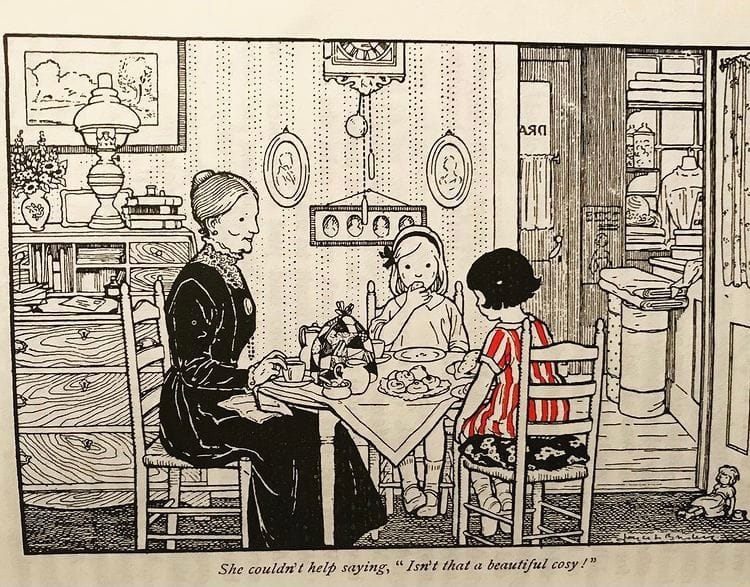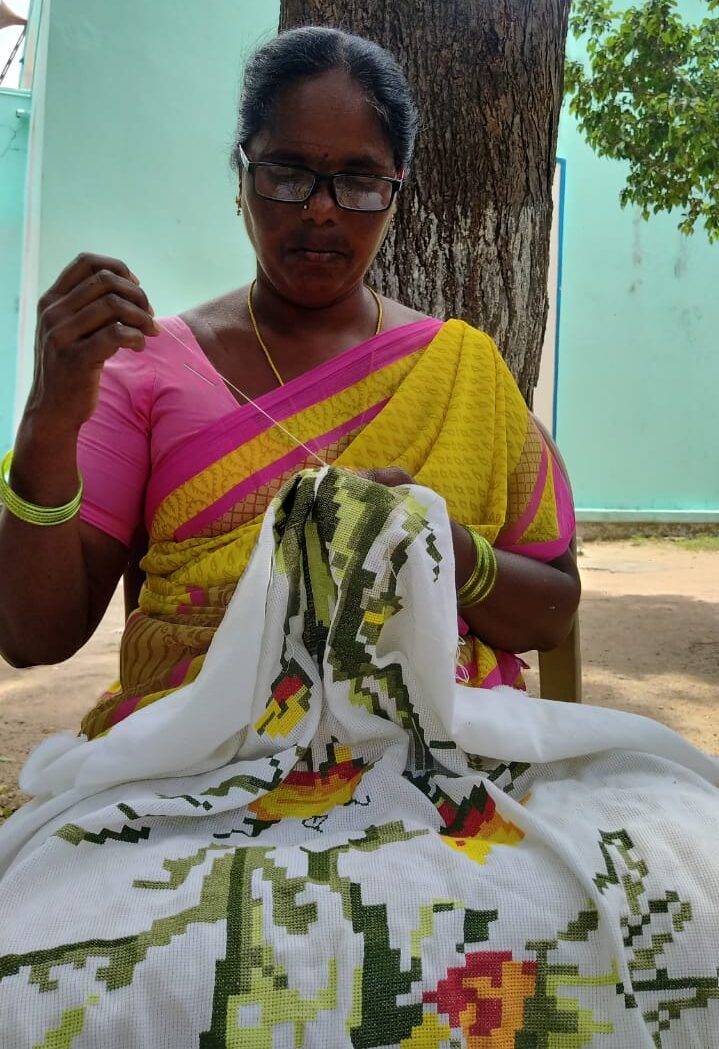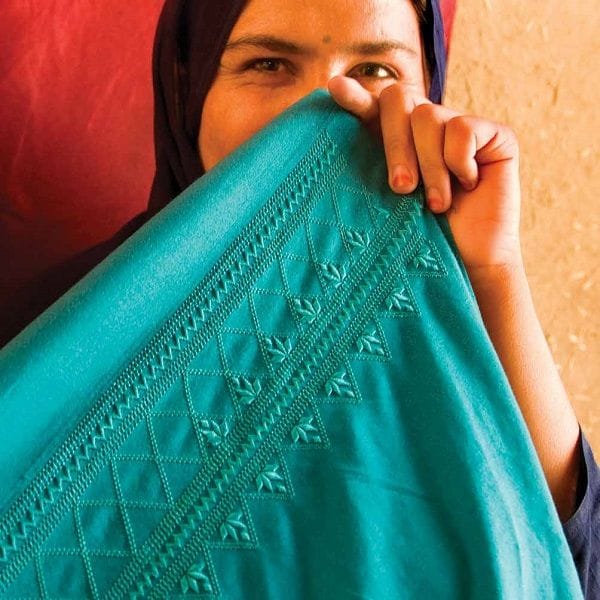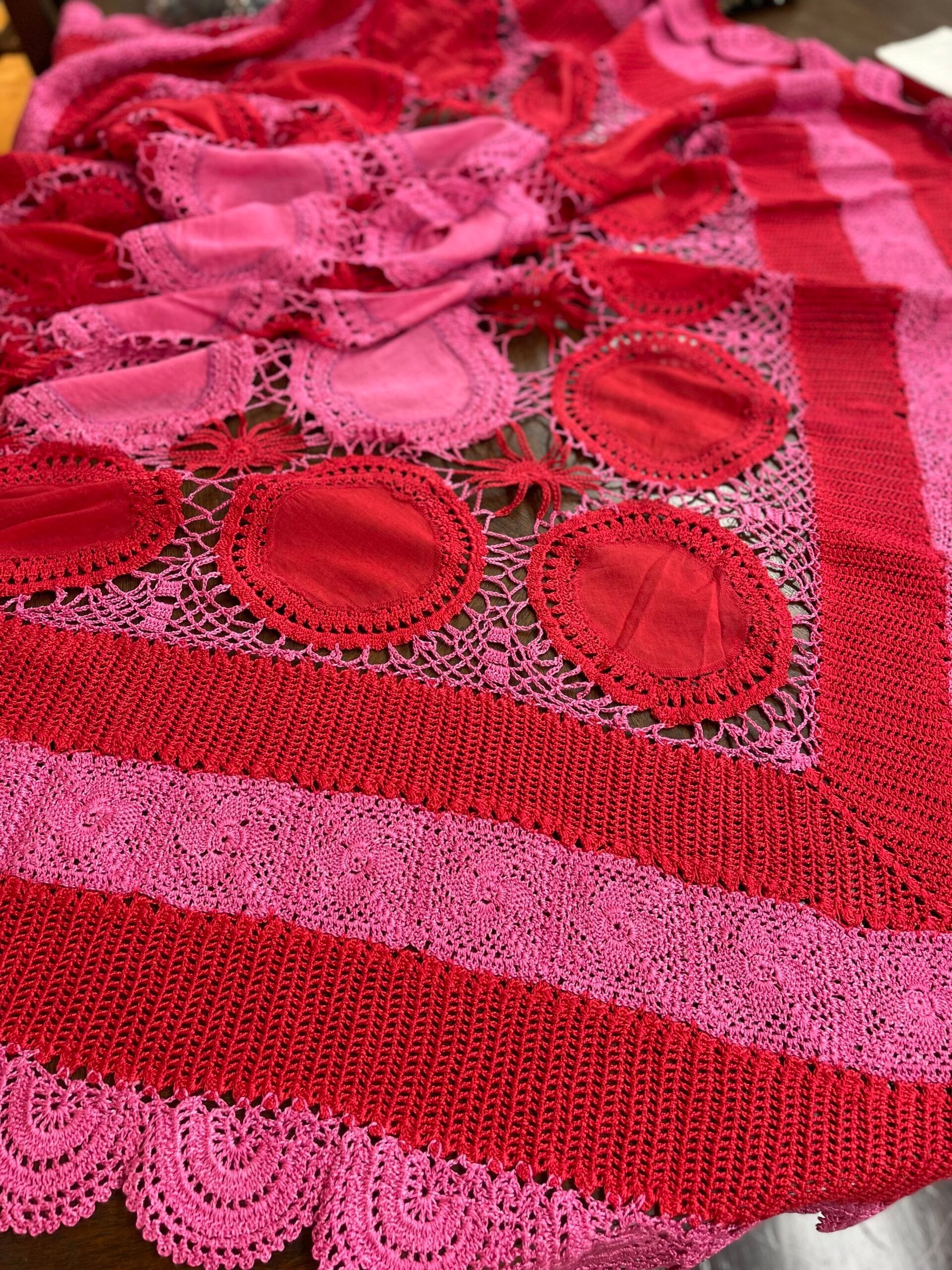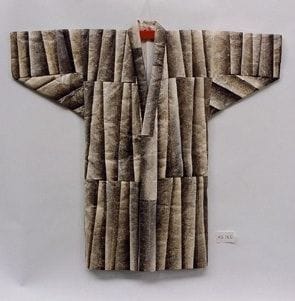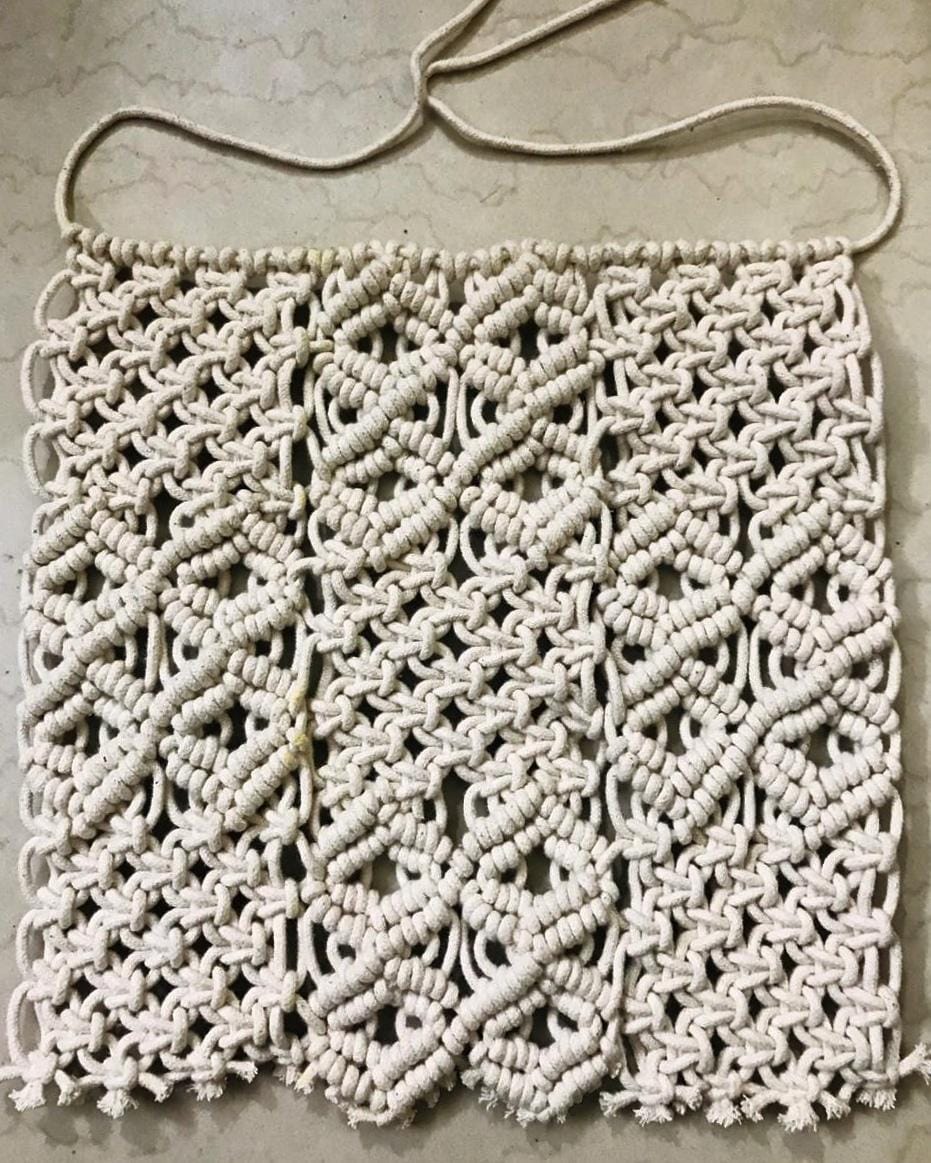18 Sep Embroidery as Art, Painting with the Needle
[vc_row css_animation="" row_type="row" use_row_as_full_screen_section="no" type="full_width" angled_section="no" text_align="left" background_image_as_pattern="without_pattern" css=".vc_custom_1632013352071{padding-right: 15px !important;}" z_index=""][vc_column width="1/2" offset="vc_col-xs-12"][vc_column_text]Embroidery As Art: Last week, I attended Shobha Broota's new show, where she used techniques like crochet and knitting to create unique art. This is, fortunately, a growing trend, but embroidery as art is still a problem area, being associated as it is with women's work, one that is coming into its own, though. To take an educated look at the history, we will have to go back to the genesis of needlework.14 Sep Cross-Stitch, A Gorgeous Embroidery developed from ‘X’ Stitches
Posted at 01:37h in Art, Artisan, Culture, DESIGN, Embroidery Series, History, Sustainability, Technique by Nidhi Garg 0 Comments
[vc_row css_animation="" row_type="row" use_row_as_full_screen_section="no" type="full_width" angled_section="no" text_align="left" background_image_as_pattern="without_pattern" css=".vc_custom_1631589941015{padding-right: 15px !important;}" z_index=""][vc_column width="1/3" css=".vc_custom_1631800168153{padding-right: 15px !important;}" offset="vc_col-xs-12"][vc_single_image image="4741" img_size="full" add_caption="yes" qode_css_animation=""][/vc_column][vc_column width="2/3" offset="vc_col-xs-12"][vc_column_text]Cross-Stitch - The inspiration for this article came from our cross-stitch expert Shobha, who joined as our first full-time cross-stitch artisan in June 2021. Shobha has been practicing this craft for the past 17 years. When she was in her twenties, she joined the training group led by father, Colombus, and has never looked back. The crafts were introduced to her village by father Colombus almost 70 years before. Father Columbus visited India through a missionary and trained women in more than 25 villages.07 Sep Afghan War Rugs and Khamak Embroidery
[vc_row css_animation="" row_type="row" use_row_as_full_screen_section="no" type="full_width" angled_section="no" text_align="left" background_image_as_pattern="without_pattern" css=".vc_custom_1631039496195{padding-right: 15px !important;}" z_index=""][vc_column offset="vc_col-xs-12"][vc_column_text]Afghan War Rugs: I made my first-ever Afghan friends in 2017 in India during the Global Entrepreneurship Summit co-hosted by India and the US Department of State. I remember my excitement to meet so many fellow women founders solving problems in their communities worldwide. However, I want to emphasize the challenges amidst which our Afgan women friends were building their companies were beyond our imagination. They were building their companies amidst the looming threat and past scars of ideological and military war.31 Aug Crochet: A Beautiful Art of Knitting
Posted at 01:14h in Art, Artisan, Culture, DESIGN, History, Sustainability, Technique by Mira Gupta 0 Comments
[vc_row css_animation="" row_type="row" use_row_as_full_screen_section="no" type="full_width" angled_section="no" text_align="left" background_image_as_pattern="without_pattern" css=".vc_custom_1630383671449{padding-right: 15px !important;}" z_index=""][vc_column offset="vc_col-xs-12"][vc_column_text]Crochet: My grandmother had a straw box that contained mostly white hanks of thread and red beads. She would take this box out when she wasn't busy, and magically little doilies with a bead edging would emerge from her fingers. These doilies were used to cover jugs of water and glasses. I didn't know it then, but she was crocheting these. Her creations are lost now, but I saw similar ones in a tiny shop in the mountains and immediately bought a few. 24 Aug Threads of Life by Clare Hunter – A Book Review
[vc_row css_animation="" row_type="row" use_row_as_full_screen_section="no" type="full_width" angled_section="no" text_align="left" background_image_as_pattern="without_pattern" css=".vc_custom_1629779248934{padding-right: 15px !important;}" z_index=""][vc_column width="1/2" offset="vc_col-xs-12"][vc_column_text]Threads of Life, We've all grown up thinking of sewing and embroidery as women's work: another unpaid and thankless chore. Darning socks, sewing on buttons, embroidering a child's dress with a motif. But occasionally, we read something that gives us pause and allows us to look at our preconceived notions afresh. I was lucky to spot Threads of Life: A history of the world through the Eye of a Needle at my local bookstore.18 Aug Ainu, a Japanese Community that Reveres Textiles
Posted at 02:38h in Art, Artisan, Culture, DESIGN, History, Sustainability, Technique by Mira Gupta 0 Comments
[vc_row css_animation="" row_type="row" use_row_as_full_screen_section="no" type="full_width" angled_section="no" text_align="left" background_image_as_pattern="without_pattern" css=".vc_custom_1629267426196{padding-right: 15px !important;}" z_index=""][vc_column offset="vc_col-xs-12"][vc_column_text][caption id="attachment_4617" align="alignleft" width="304"] The Ainu. Picture from Thummanit Phuvasatien .[/caption]Ainu: We who love textiles know what it is to revere an exceptional piece of weaving or embroidery. But there is a community where this is literally practiced. And that is by the Ainu.
The Ainu. Picture from Thummanit Phuvasatien .[/caption]Ainu: We who love textiles know what it is to revere an exceptional piece of weaving or embroidery. But there is a community where this is literally practiced. And that is by the Ainu. History of Ainu
The Ainu have lived on the island of Hokkaido for millennia, populating a culture distinct from the Japanese. Following a Hunter-gatherer lifestyle, they, like most communities that live off the land, revered all things natural. This reverence interestingly extended to tools and clothes, the minutiae of daily life. One fascinating aspect of their culture is the reverence of bears, which are seen as gods. The Ainu would often collect bear cubs and bring them up in their homes, exactly as they brought up children. Eventually, these bears were sacrificed in a ritualistic ceremony, with their flesh and fur highly valued as divine.10 Aug Story of Smocking, An Embroidery Technique to Gather Fabric to Create Stretch
Posted at 17:40h in Art, Artisan, Culture, DESIGN, Embroidery Series, History, Technique by Mira Gupta 0 Comments
[vc_row css_animation="" row_type="row" use_row_as_full_screen_section="no" type="full_width" angled_section="no" text_align="left" background_image_as_pattern="without_pattern" css=".vc_custom_1628630421216{padding-right: 15px !important;}" z_index=""][vc_column width="1/2" offset="vc_col-xs-12"][vc_column_text]Smocking: Those of us who grew up in the 1960s and the decades before then have all worn gingham dresses, very often with smocking. I know that I associate smocking exclusively with dresses for little girls. But that's not how the craft started. In a reversal of timelines from most forms of embroidery, which have been the province of the elite, smocking began as a means to render peasant clothing practical. And this is what makes it unique among all the forms of embroidery. Embroidery Series by Marasim06 Aug Macrame, a Knotting Technique with a Long History and Great Appeal
Posted at 00:56h in Art, Artisan, Culture, DESIGN, History, Sustainability, Technique by Nidhi Garg 0 Comments
[vc_row css_animation="" row_type="row" use_row_as_full_screen_section="no" type="full_width" angled_section="no" text_align="left" background_image_as_pattern="without_pattern" css=".vc_custom_1628220473151{padding-right: 15px !important;}" z_index=""][vc_column offset="vc_col-xs-12"][vc_column_text]In 2019 we did a lot of research and development in hand knitting, knotting, smocking, and bead-making techniques. We worked with a group of women artisans in the villages of Western Uttar Pradesh in India. Before making the trip to these villages and meeting these women, I was under the impression that these techniques are almost similar to each other and created similar looks. However, once we worked with these masters, we learned about the nuances of different techniques and various design possibilities associated with them. Together with the artisans, we co-created beautiful and chic panels.

